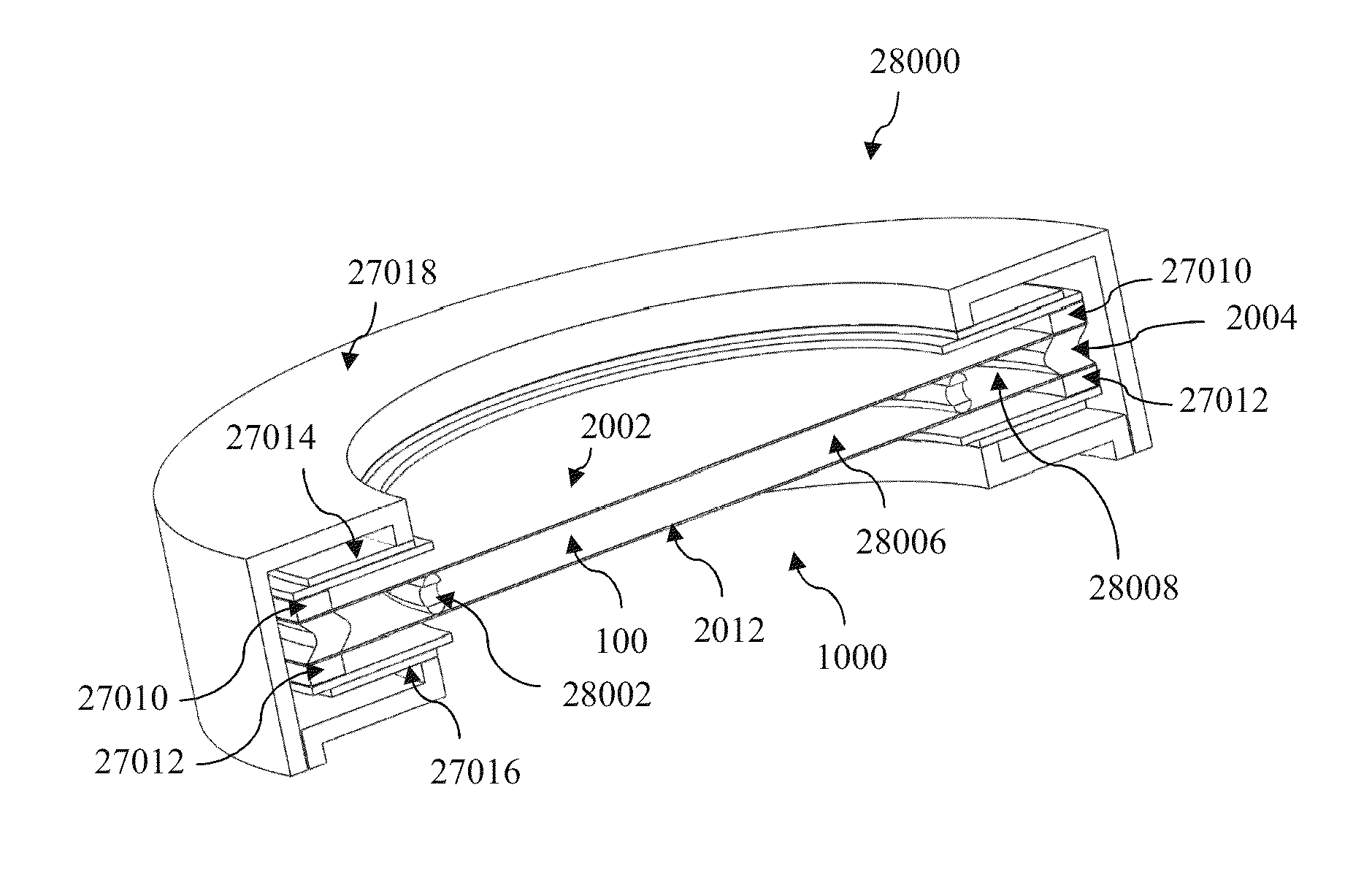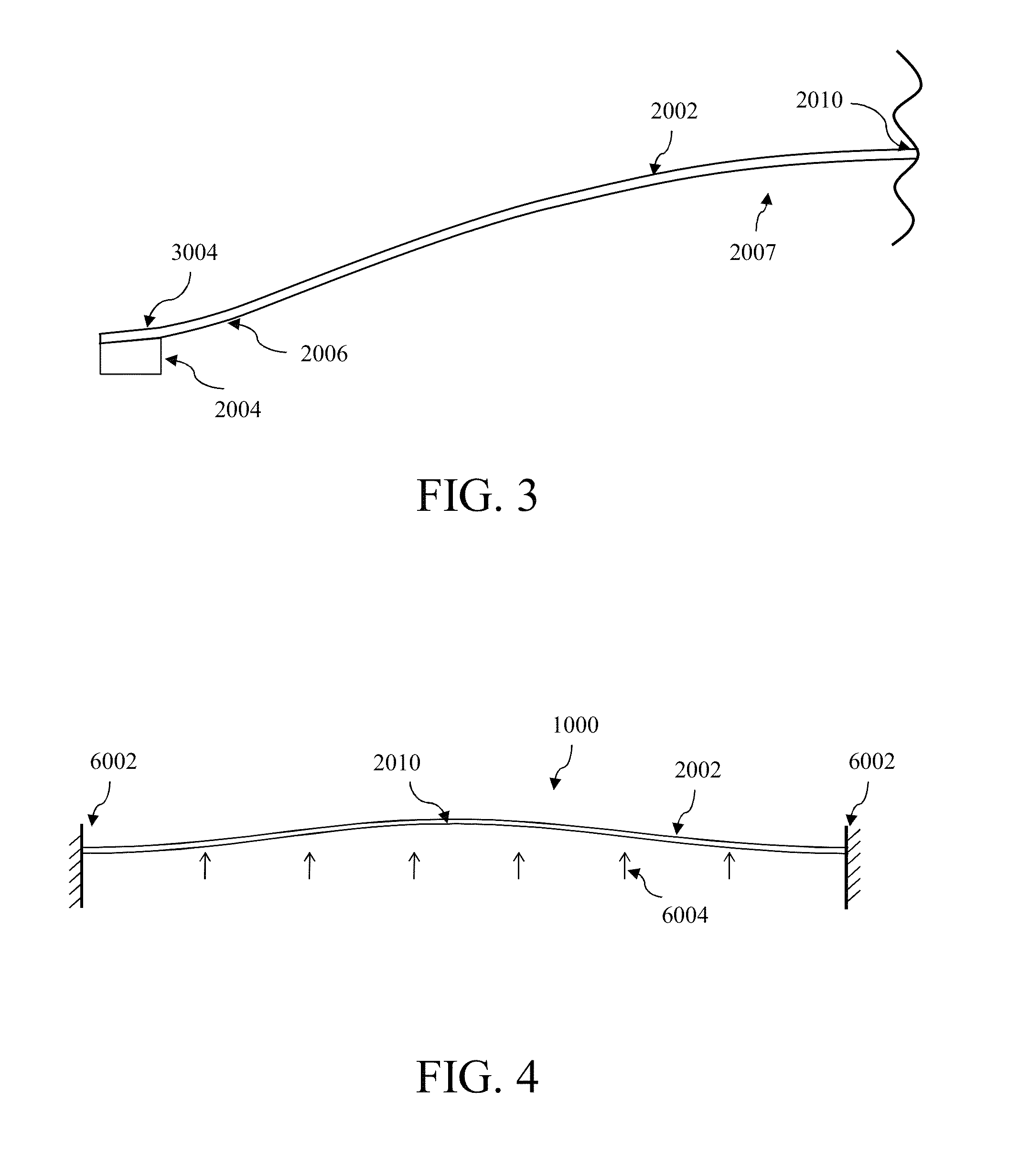Adaptive optical devices with controllable focal power and aspheric shape
a technology of adaptive optical devices and focal power, applied in the field of liquid lens, can solve the problems of difficult to maintain a stable interface for clear apertures greater than about 5-mm diameter, remote location of pressurized fluid sources, and slow response time, so as to reduce optical aberration, limit the ability to control optical properties, and reduce optical aberration.
- Summary
- Abstract
- Description
- Claims
- Application Information
AI Technical Summary
Benefits of technology
Problems solved by technology
Method used
Image
Examples
embodiment
Preferred Embodiment
Ring-on-Ring Load and Stiff Optical Surface
[0137]In a preferred embodiment, spherical curvature may be maintained in the clear aperture region of the optical surface throughout its states of deflection by the use of a stiff optical surface and concentrated concentric ring-on-ring (or “double-ring”) applied load. In one example of such a configuration, a compartment may be bounded by a first optical surface and a second optical surface. One or more of first and second optical surfaces may be capable of deflection by bending. Further, first and second optical surfaces may be circular-disk shaped and have substantially the same edge radius. A first ring-shaped support (first support) may be configured with a first support radius substantially equal to, or slightly smaller than the edge radius. The first support may be fastened to first and second optical surfaces and may form a seal. First support may be at least partially compliant and configured to allow first and...
PUM
| Property | Measurement | Unit |
|---|---|---|
| elastic modulus | aaaaa | aaaaa |
| Young's modulus | aaaaa | aaaaa |
| thickness | aaaaa | aaaaa |
Abstract
Description
Claims
Application Information
 Login to View More
Login to View More - R&D
- Intellectual Property
- Life Sciences
- Materials
- Tech Scout
- Unparalleled Data Quality
- Higher Quality Content
- 60% Fewer Hallucinations
Browse by: Latest US Patents, China's latest patents, Technical Efficacy Thesaurus, Application Domain, Technology Topic, Popular Technical Reports.
© 2025 PatSnap. All rights reserved.Legal|Privacy policy|Modern Slavery Act Transparency Statement|Sitemap|About US| Contact US: help@patsnap.com



